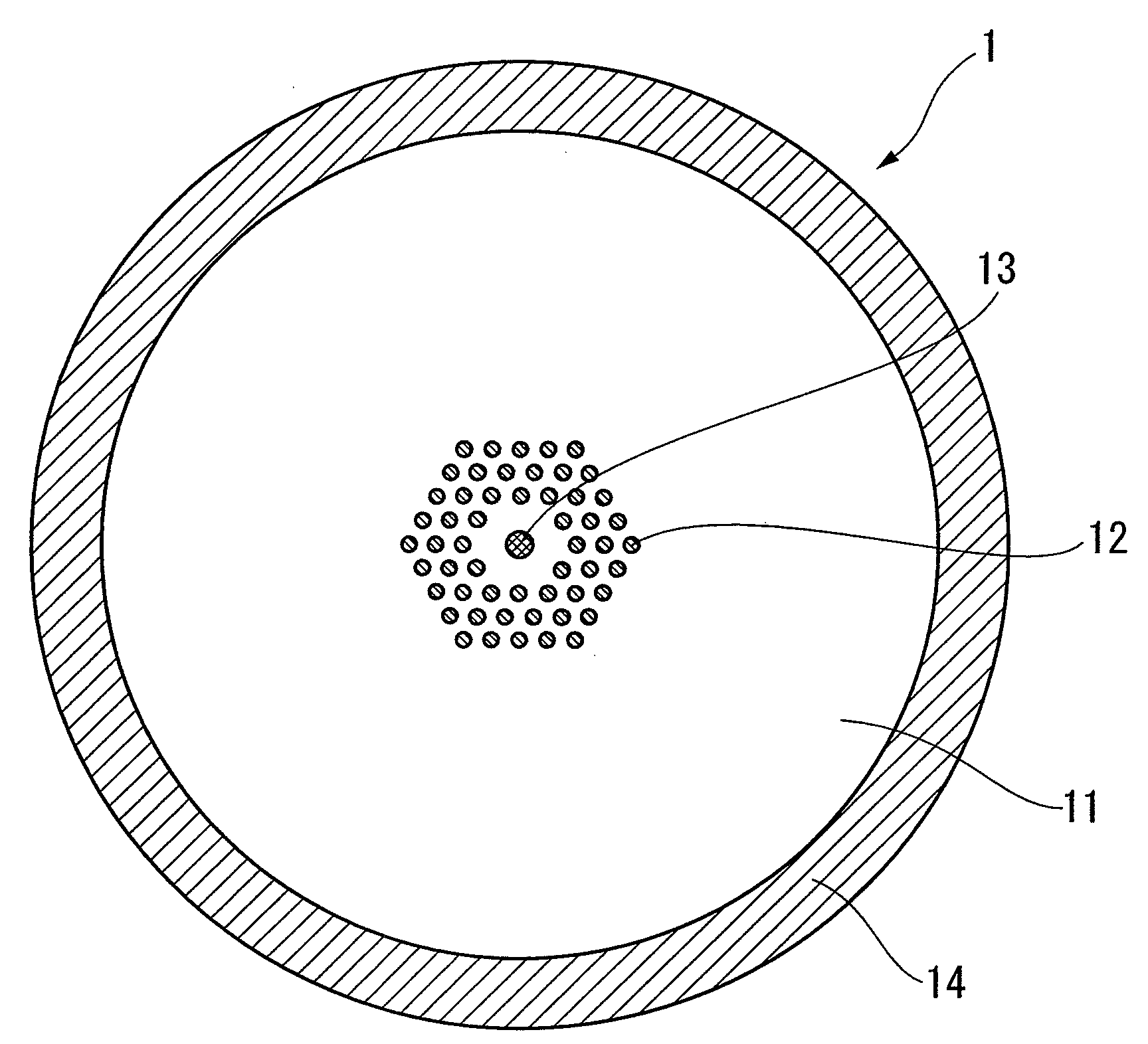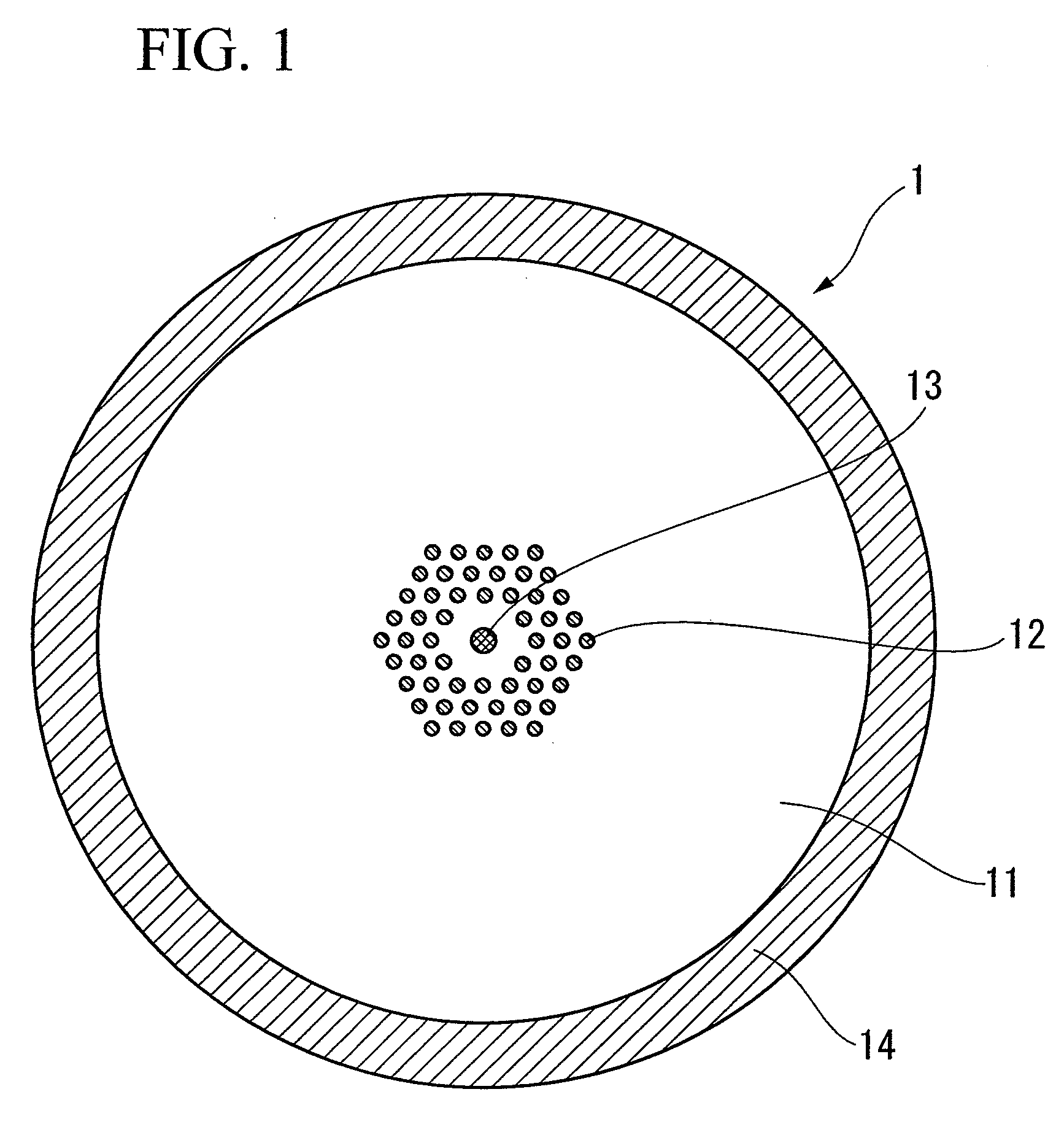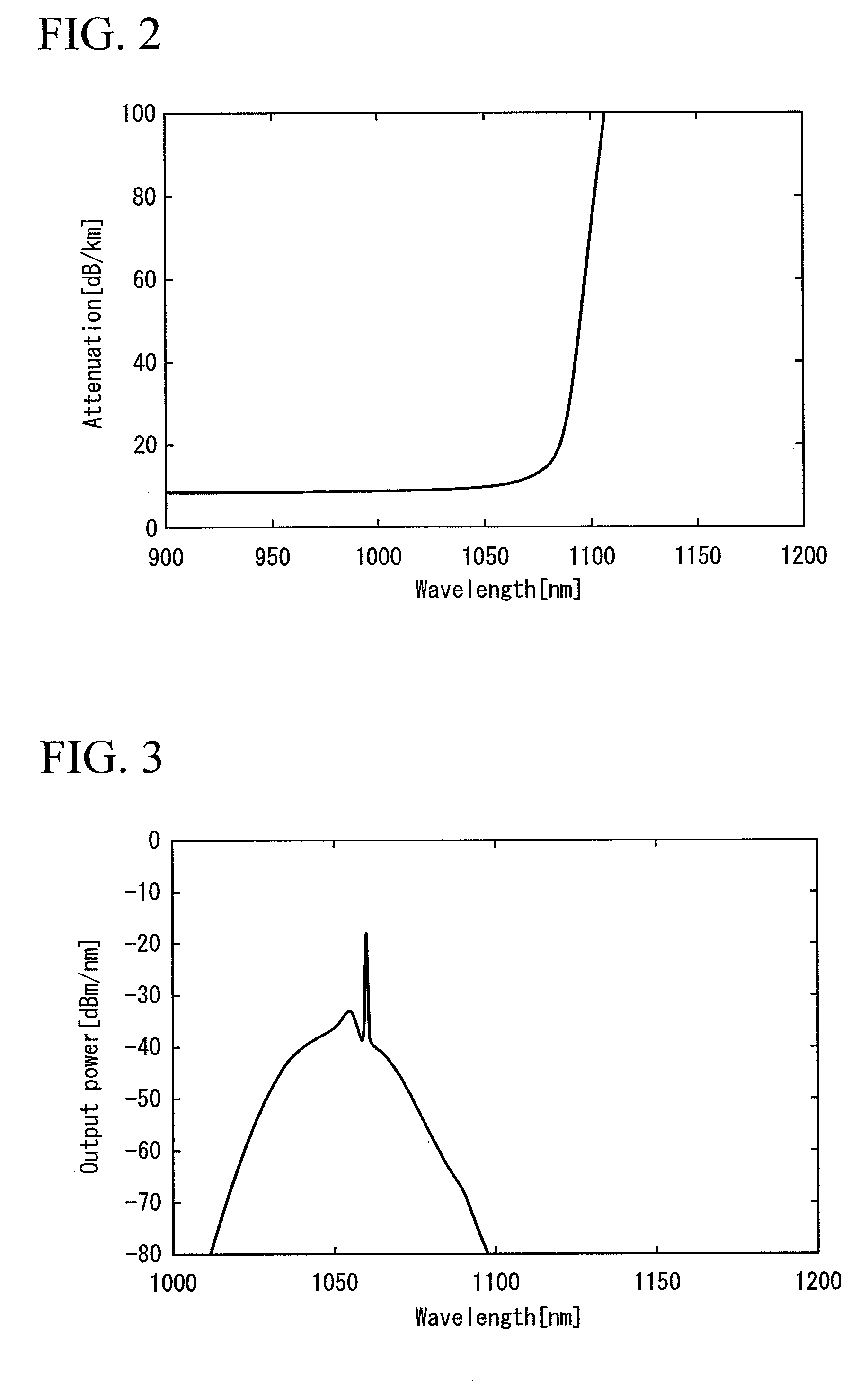Photonic bandgap fiber
a bandgap fiber and bandgap technology, applied in the field of photonic bandgap fibers, can solve the problems of amplifying spontaneous emission, amplifying fibers and light-guiding fibers, and stimulating raman scattering, etc., to suppress the generation of stimulated raman scattering, suppress the loss of pumping light, and reduce the loss of ligh
- Summary
- Abstract
- Description
- Claims
- Application Information
AI Technical Summary
Benefits of technology
Problems solved by technology
Method used
Image
Examples
exemplary embodiment 1
[0059]FIG. 1 is a cross-sectional view that shows the structure of a light-guiding fiber of In light-guiding fiber 1, high refractive index portions 12, which are made of germanium dioxide doped silica glass and have a relative refractive-index difference of 2.8% with respect to pure silica glass, are provided in a first cladding 11 made of pure silica glass with a triangular lattice structure that forms a periodic photonic band.
[0060]The photonic band has a layered structure circumferentially centered around a first core 13, having a relative refractive-index difference of 0.3% with respect to pure silica glass, where each layer comprises a ring of adjacent high index refraction portions together forming a lattice structure with a lattice constant Λ. A spacing equivalent to the size of a layer including six high refractive index portions resides between the core 13 and the innermost high refractive index portions of the lattice structure. For example, such a lattice structure can ...
exemplary embodiment 2
[0076]FIG. 4 is a cross-sectional view that shows the structure of an amplifying fiber 2 of exemplary Embodiment 2 according to the present invention.
[0077]In the amplifying fiber 2, high refractive index portions 22 which are made of germanium dioxide doped silica glass, and have a relative refractive-index difference of 2.5% with respect to pure silica glass, are provided in a first cladding 21 made of pure silica glass with a triangular lattice periodic structure to form a photonic band. Similarly to Embodiment 1, the triangular lattice structure has a layered structure circumferentially centered around a core 23, which functions as an amplification medium by doping ytterbium oxide in pure silica glass and has a relative refractive-index difference of 0.3% with respect to pure silica glass, where each layer comprises a ring of adjacent high index refraction portions together forming a lattice structure with a lattice constant Λ. A spacing equivalent to the size of a layer includi...
exemplary embodiment 3
[0084]FIG. 7 is a cross-sectional view that shows the structure of a fiber 3 of exemplary Embodiment 3 according to the present invention.
[0085]In the fiber 3, high refractive index portions 32 which are made of germanium dioxide doped silica glass, and have a relative refractive-index difference of 2.0% with respect to pure silica glass, are provided in a first cladding 31 made of pure silica glass with a triangular lattice periodic structure to form a photonic band. Similarly to Embodiment 1, the triangular lattice structure has a layered structure circumferentially centered around a core 33, having a relative refractive-index difference of 0.7% with respect to pure silica glass, where each layer comprises a ring of adjacent high index refraction portions together forming a lattice structure with a lattice constant Λ. A spacing equivalent to the size of a layer including six high refractive index portions resides between the core 33 and the innermost high refractive index portions...
PUM
| Property | Measurement | Unit |
|---|---|---|
| wavelength | aaaaa | aaaaa |
| wavelengths | aaaaa | aaaaa |
| wavelength | aaaaa | aaaaa |
Abstract
Description
Claims
Application Information
 Login to View More
Login to View More - R&D
- Intellectual Property
- Life Sciences
- Materials
- Tech Scout
- Unparalleled Data Quality
- Higher Quality Content
- 60% Fewer Hallucinations
Browse by: Latest US Patents, China's latest patents, Technical Efficacy Thesaurus, Application Domain, Technology Topic, Popular Technical Reports.
© 2025 PatSnap. All rights reserved.Legal|Privacy policy|Modern Slavery Act Transparency Statement|Sitemap|About US| Contact US: help@patsnap.com



